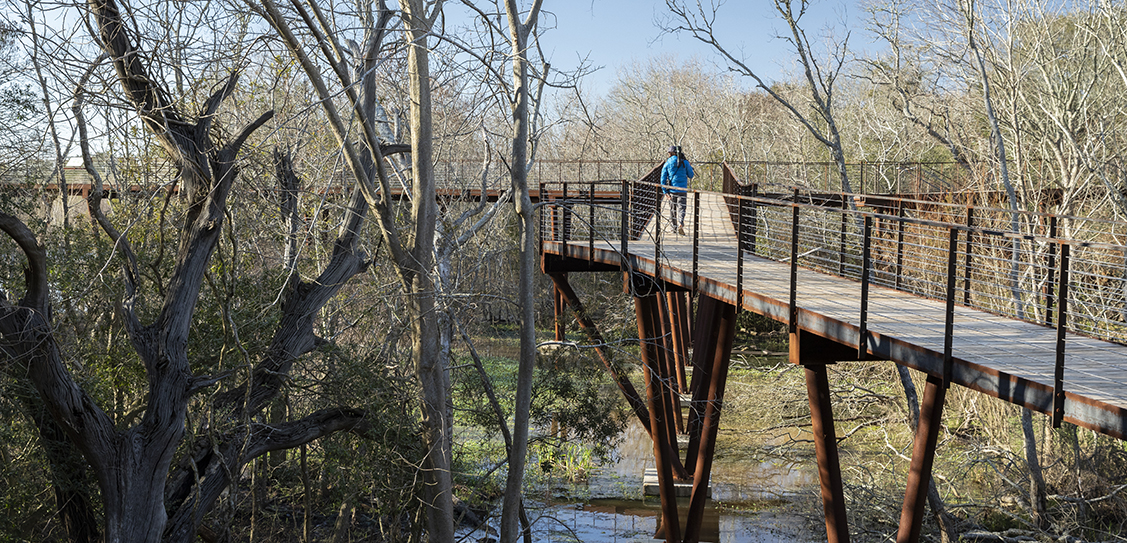The project elevates visitors up into and through a canopy refuge known as an important stopover for more than 300 species of migratory birds.
Schaum/Shieh also designed two buildings as part of the newly rehabilitated sanctuary, a historic 20s brick pump house that serves as a visitor’s pavilion, and a new information kiosk and refreshment station.
The Canopy Walk was designed to be robust enough to weather the humid environment full of dense vegetation, yet light enough on the land to retain its ecology, which includes a resident alligator population. The structure is shaped to work through and around existing heritage oaks and other large trees, while mimicking the tree structures, in order to blend efficiently into the natural setting. The elevated design protects migratory birds while allowing visitors to maintain views without interfering with migrating animals. The elevated boardwalk is wheelchair accessible.
As the gateway to the property, the pump house serves as an information and coordination hub for peak season birding activities. The building incorporates low energy passive cooling strategies that capitalise on the existing thermal mass in the concrete foundations, while new fans move the air through and out of the ceiling in warm periods. The cast concrete ceiling and historic brick façade has been cleaned and exposed to reveal the history of the small-scale public infrastructure of this community, repurposed to this new centre for visiting birders.
A concrete path connects the pumphouse to a new, adjacent structure, which comprises restrooms, water fountains, and an information kiosk. Gabled metal in deep gray clads the roof and extends down two sides of the building, doubling as exterior walls. Concrete masonry walls peek out from underneath the roof’s long eaves and are painted “Audubon Green,” a colour that nods to the Houston Audubon Society’s brand identity while also blending with the surrounding plant life.



